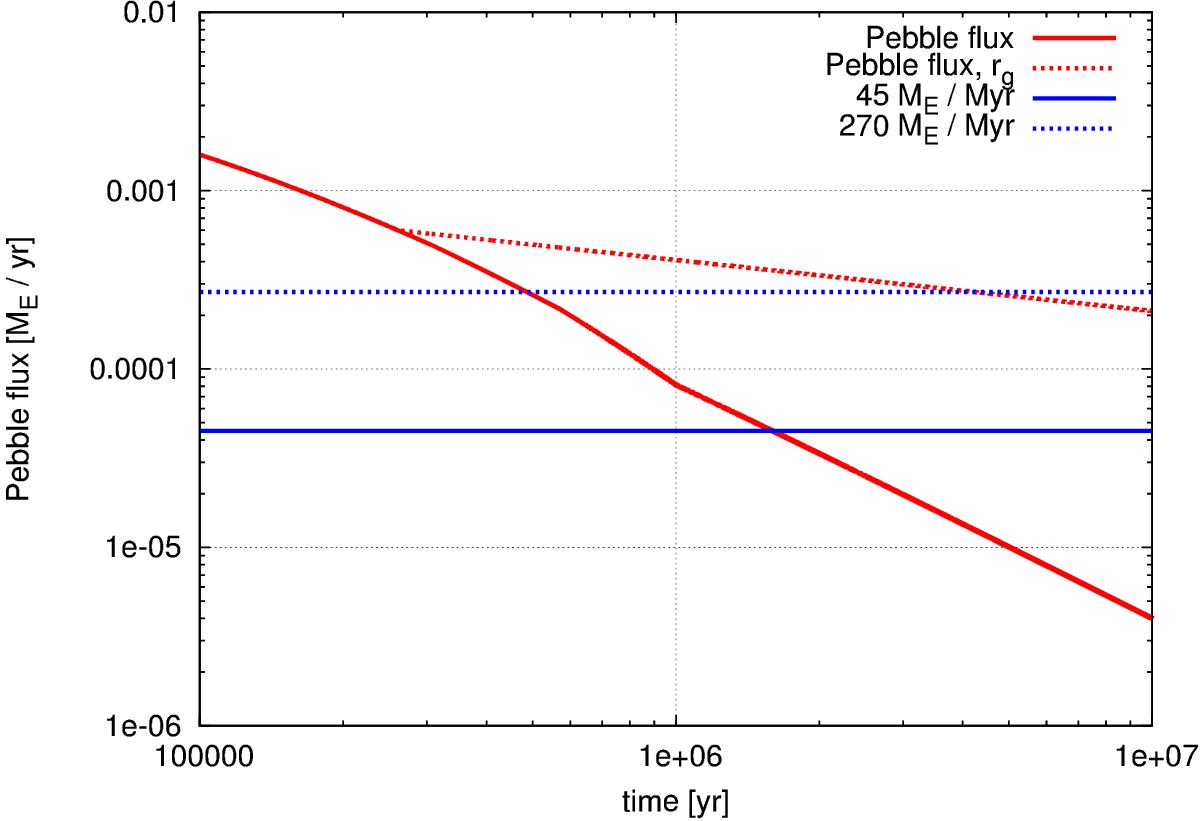Fig. 1

Pebble flux Ṁpeb as a function of time using the time-dependent protoplanetary disc evolution model (solid red line) and for a protoplanetary disc evolution model where the outer gas disc does not evolve in time (dotted red line). In blue we show constant pebble fluxes of 45 ME/Myr (solid line) and 270 ME/Myr (dotted line). In principle, a pebble flux of 45 ME/Myr is large enough to grow a planet from 5 to 10 ME in 1 Myr, but the migration timescale is a factor of a few shorter than that, indicating that planet would be lost to the central star. Higher pebble fluxes of ≈270 ME/Myr allow growth fast enough to reach the pebble isolation mass and thus allow gas accretion and the transition to type-II migration before type-I migration drives the planet all the way to the central star. Our revised disc evolution model is able to reproduce these high pebble fluxes (dotted red line).
Current usage metrics show cumulative count of Article Views (full-text article views including HTML views, PDF and ePub downloads, according to the available data) and Abstracts Views on Vision4Press platform.
Data correspond to usage on the plateform after 2015. The current usage metrics is available 48-96 hours after online publication and is updated daily on week days.
Initial download of the metrics may take a while.


